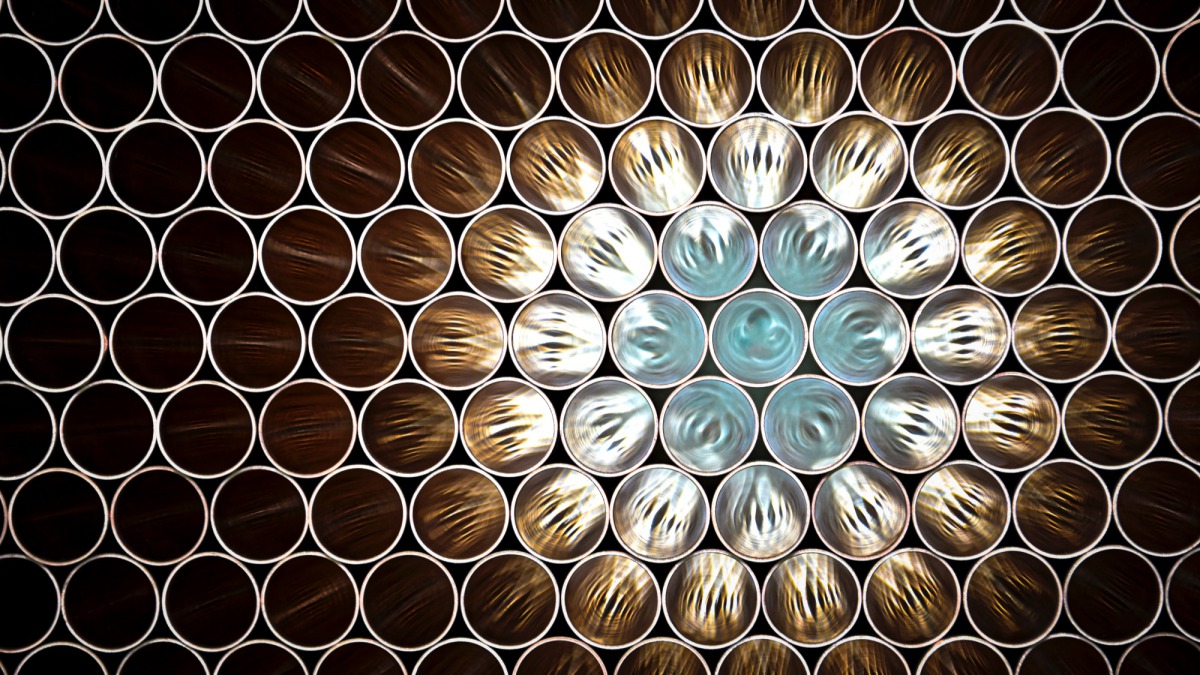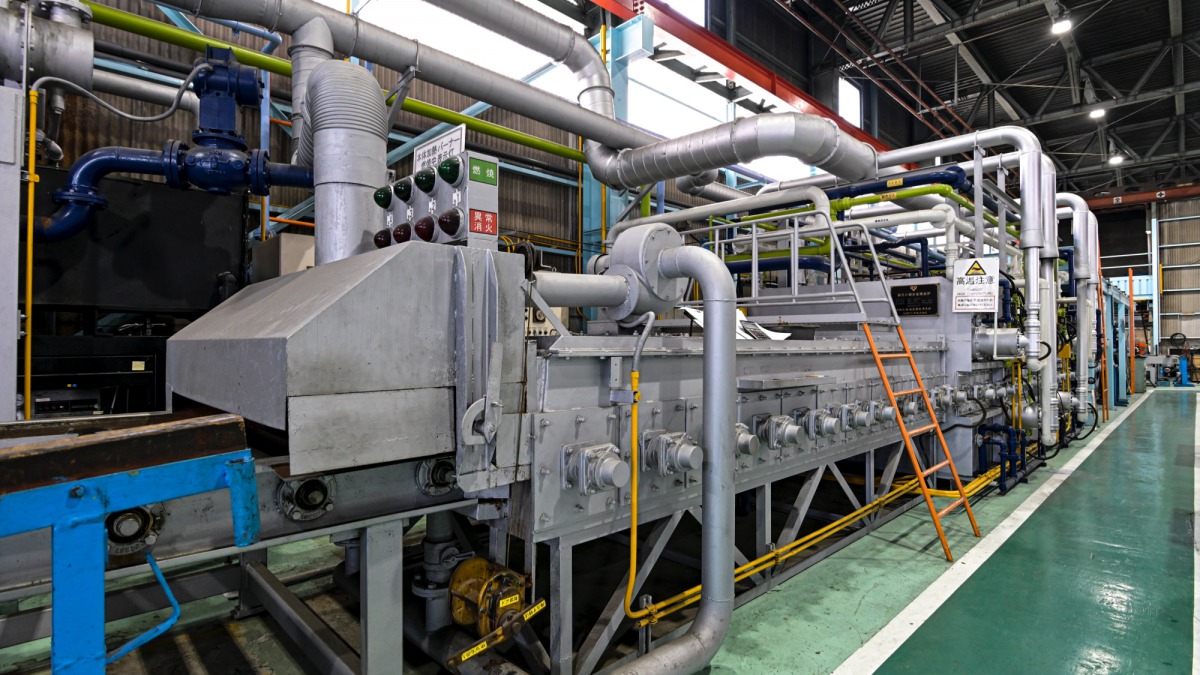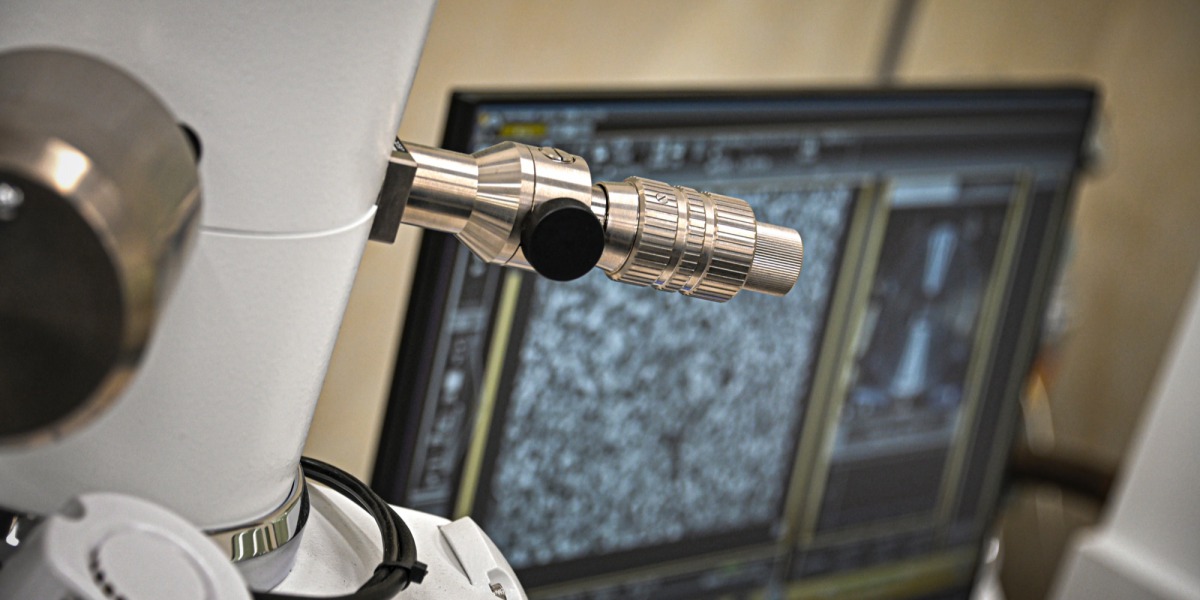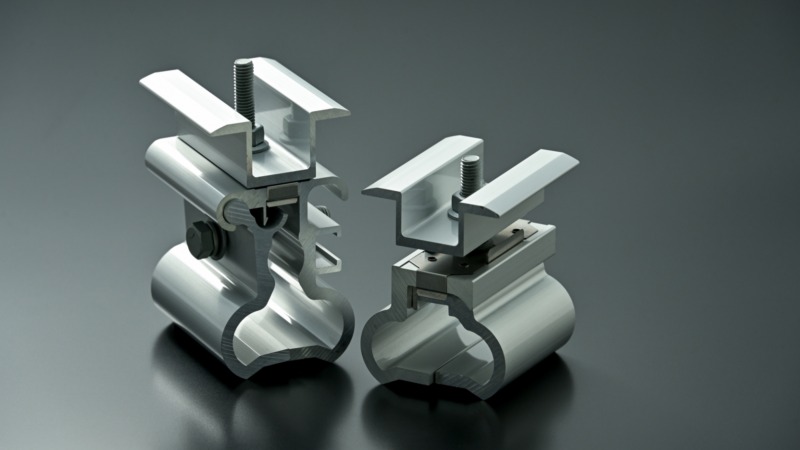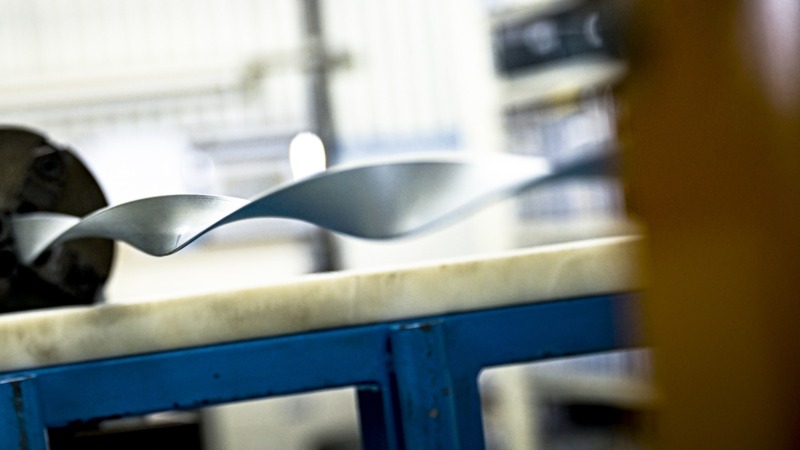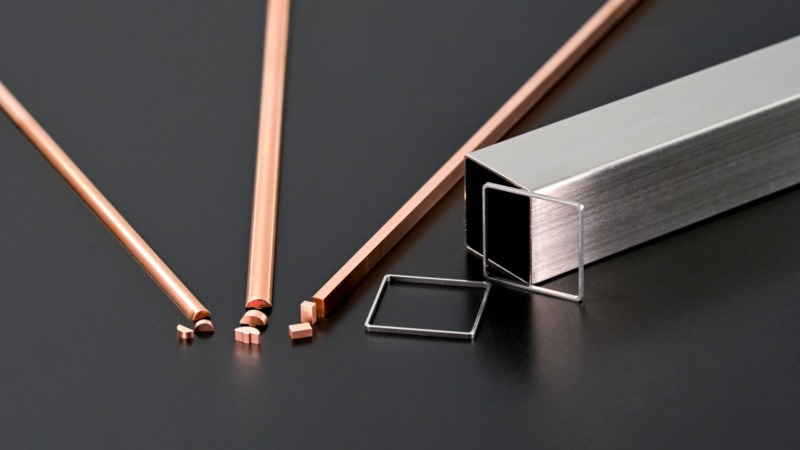List of Metal Materials
The following is a list of applications and functions for each of the metal materials mainly used in our products.
Please refer to the following list to select the function and material that best suits your field of application and product specifications.
*Please consult with us about material procurement and manufacturing for materials not listed here.
Copper Materials
| Metal name | Materials, Standard name | Shapes | Uses and Features |
|---|---|---|---|
| Oxygen free copper | C1020 | Tube, Bar, Rod, Wire, Plate | High-purity oxygen-free copper with 99.9% purity or higher. Oxygen content is minimized to suppress hydrogen embrittlement at high temperatures. It boasts excellent electrical and thermal conductivity. Good workability makes it ideal for components requiring welding or brazing. Widely used in applications demanding reliability, such as electronic devices, busbars, and heat exchangers. |
| Tough pitch copper | C1100 | Bar, Rod, Wire, Plate | Pure copper with a purity of 99.9% or higher. Like C1020, it possesses excellent electrical and thermal conductivity. However, due to its trace oxygen content, it may undergo hydrogen embrittlement at temperatures above 600°C in hydrogen-containing atmospheres. Therefore, it is widely used in electrical components, wires, heat exchangers, and other applications that do not require welding or brazing. It is a relatively inexpensive, easy-to-process, and highly versatile material. |
| Phosphorous deoxidized copper | C1220 | Tube | Phosphorus-deoxidized copper, a copper alloy with a purity of 99.9% or higher. A trace amount of phosphorus is added as a deoxidizer, eliminating concerns about hydrogen embrittlement, a problem with tough pitch copper. It offers excellent workability, weldability, corrosion resistance, and thermal conductivity. While its electrical conductivity is slightly lower than other pure copper alloys, it remains sufficiently high. Widely used in applications involving welding or brazing, such as water heaters, water pipes, air conditioning piping, and gaskets. |
| Brass | C2600, C2700, C2800 | Tube, Bar, Rod, Wire | Zinc alloys exist in diverse types based on zinc content and offer excellent workability. They exhibit high ductility and machinability, making them suitable for manufacturing complex-shaped components. Castability is also favorable. They display a beautiful golden color, making them useful for jewelry. Possessing a certain degree of corrosion resistance, zinc is widely used across various fields such as valves, piping, musical instruments, and art crafts. |
| ManganinⓇ | C2532 | Tube, Bar, Rod, Wire, Plate | An alloy of copper, manganese, and nickel. Its electrical resistance remains virtually unchanged with temperature, making it indispensable as a high-precision resistive material. It is particularly used in standard resistors and precision measuring instruments. Its thermoelectric power is also extremely low, suppressing error factors in thermocouples. This material provides reliability in applications requiring stable electrical characteristics. |
| Naval brass | C4622, C4641 | Tube, Bar, Rod | A type of brass primarily composed of copper and zinc, with a small amount of tin (Sn) added. The addition of tin significantly improves corrosion resistance, particularly seawater resistance. It is less prone to dezincification corrosion and stress corrosion cracking than standard brass. Its enhanced strength makes it ideal for components used in marine environments or harsh conditions, such as ship parts, shafts, and valves. It also offers good workability, making it an essential material for applications requiring high reliability. |
| High strength brass | C6782, C6783 | Tube, Bar, Rod | Brass alloy containing aluminum, manganese, iron, and other elements in addition to copper and zinc. True to its "high-strength" designation, it offers dramatically improved strength and hardness compared to standard brass. It also excels in wear resistance, making it ideal for low-speed, high-load sliding components. It offers good corrosion resistance, particularly against seawater, making it strong for use in harsh environments like marine propeller shafts and pump shafts. It also excels in castability and hot forging, making it a suitable material for manufacturing large components. |
| Beryllium copper | C1720 | Tube, Bar, Rod, Plate | Beryllium copper is an alloy created by adding a small amount of beryllium to copper. It boasts the highest strength and hardness among copper alloys. Simultaneously, it possesses high electrical and thermal conductivity, along with excellent spring properties, fatigue resistance, corrosion resistance, and wear resistance. These properties are realized through special heat treatment (precipitation hardening). It is widely used in fields requiring high reliability and performance, such as electronic components like connectors, switches, and relays, as well as explosion-proof tools and precision molds. However, caution is necessary as inhaling dust during processing poses health risks. |
| Phosphor bronze | C5111, C5191, C5212 | Tube, Bar, Rod, Wire, Plate | An alloy of copper with added tin and a small amount of phosphorus. It possesses excellent strength, hardness, and fatigue resistance. It excels particularly in spring characteristics, making it ideal for components requiring elasticity. It also offers good corrosion resistance and wear resistance. Widely used as spring material for precision electronic components such as connectors, switches, and relays in electronic devices. It is also adopted for mechanical parts like bearings and gears, as well as for musical instruments, making it a multifunctional, high-performance copper alloy. |
| Nickel Silver | C7451, C7521, C7541, C7701 | Tube, Bar, Rod, Wire | An alloy primarily composed of copper, zinc, and nickel. Also known as nickel silver, German silver, or white metal, though it contains no silver. Characterized by a beautiful silvery-white luster, excellent workability, corrosion resistance, and fatigue resistance. Spring characteristics and strength can be adjusted by varying the nickel content. Particularly suitable for deep drawing, allowing it to be formed into various shapes. It is used in a wide range of fields requiring both visual appeal and high performance, such as high-end Western tableware, decorative items, musical instruments, electronic components, and medical devices. |
| Nickel and copper alloy | C7060, C7100, C7150 | Tube, Plate | An alloy made by adding 10 to 30% nickel to copper. Also known as cupro-nickel. Depending on the nickel content, it exhibits a beautiful silver-white luster similar to silver. It possesses excellent corrosion resistance and ductility. Particularly resistant to seawater, it is used in condensers, heat exchangers, and ship components. A practical material widely utilized in diverse fields such as coins (e.g., Japan's 100-yen and 50-yen coins), tableware, musical instruments, and electronic components. |
| Aluminum oxide dispersion strengthened copper(ODS) | ODS I, ODS II, ODS III | Tube, Bar, Rod, Wire, Plate | A special copper alloy featuring uniformly dispersed fine alumina particles within a copper matrix. Its greatest advantage lies in this unique structure, which dramatically enhances strength, wear resistance, and resistance to softening at high temperatures while maintaining the high electrical and thermal conductivity of pure copper. It combines "high strength" and "high conductivity" – properties difficult to achieve simultaneously in conventional copper alloys. Primary applications include relay contacts for electric vehicles (EVs) such as automobiles, lithium-ion batteries, and galvanized steel sheets; heat sinks; electronic components handling high currents; X-ray tubes; and aerospace components. It particularly excels in scenarios demanding stable performance and long life under high-temperature conditions, significantly contributing to enhanced product reliability. |
Aluminum materials
| Metal name | Materials, Standard name | Shapes | Uses and Features |
|---|---|---|---|
| 1000 Series Aluminum | A1050, A1070, A1100 | Tube, Bar, Rod, Wire, Plate | Pure aluminum with a purity of 99% or higher. It possesses excellent electrical and thermal conductivity. It also offers high corrosion resistance and excellent workability, particularly for surface treatments like anodizing (anodic oxidation). While its strength is lower compared to other aluminum alloys, its properties make it a versatile material used in a wide range of applications, including electrical wires, heat sinks, food containers, and nameplates. |
| 2000 series Al-Cu | A2014, A2017 | Tube, Bar, Rod, Wire | Aluminum alloys primarily alloyed with copper (Cu). They exhibit excellent strength and hardness through heat treatment. They rank among the highest strength aluminum alloys. Corrosion resistance may be inferior to other alloys, so surface treatment is often applied before use. An essential material for applications requiring lightweight and high strength, such as aircraft structural components, aerospace parts, and automotive components. Representative examples include duralumin (A2017) and super duralumin (A2024). |
| 3000 series Al-Mn series | A3003 | Tube, Bar, Rod, Wire | Aluminum alloy primarily alloyed with manganese (Mn). It maintains the excellent corrosion resistance and workability of pure aluminum while improving strength. It also offers good weldability and high versatility. It is used in a wide range of applications, including cans and containers, building materials (roofing materials, siding), automotive parts, and fin materials. Representative alloys include A3003 and A3004, and it is particularly well-known as the body material for aluminum cans. |
| Series 4000 Al-Si | A4043 | Bar, Rod, Wire, Plate | Aluminum alloy with silicon (Si) as the primary additive element. The addition of silicon enhances wear resistance and heat resistance. It is widely used as brazing material and welding rod, particularly due to its melting point-lowering effect. It also offers excellent castability, making it ideal for engine components, pistons, automotive wheels, and other applications involving high temperatures or friction. Its good machinability further contributes to its frequent adoption in automotive-related parts. |
| Series 5000 Al-Mg type | A5052, A5056, A5083 | Tube, Bar, Rod, Wire, Plate | Aluminum alloys primarily alloyed with magnesium (Mg). Despite being non-heat-treatable alloys, they boast the highest strength and weldability among aluminum alloys. It exhibits exceptional corrosion resistance, particularly in seawater environments, making it widely used in applications demanding high strength and corrosion resistance, such as ships, vehicles, building structures, chemical plants, and offshore structures. Representative grades include A5052 and A5083. |
| Series 6000 Al-Mg-Si | A6005(former 6N01), A6061, A6063, A6010 | Tube, Bar, Rod, Wire, Plate | Aluminum alloys primarily alloyed with magnesium (Mg) and silicon (Si). They exhibit high strength through heat treatment and offer an excellent balance between strength and machinability. They are particularly well-suited for extrusion processing, making them ideal for manufacturing extruded materials with complex cross-sectional shapes. It also offers good corrosion resistance and is used in a wide range of fields requiring both lightweight and high strength, such as architectural structural materials, automotive parts (frames, panels), railway vehicles, and bicycle frames. Representative alloys include A6061 and A6063. |
| 7000 series Al-Zn-Si | A7075 | Tube, Bar, Rod, Wire, Plate | Also known as "super-duper duralumin," this high-strength aluminum alloy incorporates zinc, magnesium, and copper additives, achieving exceptional strength through heat treatment. Its combination of lightness and strength makes it widely used in fields demanding extreme performance, such as structural materials for aircraft and space rockets, high-performance automotive components, robotic arms, and sports equipment. In today's world where weight reduction and high functionality are essential, it plays a vital role as a key material. |
Iron material
| Metal name | Materials, Standard name | Shapes | Uses and Features |
|---|---|---|---|
| Pure iron | 99% to 99.998% purity | Tube, Bar, Rod, Wire, Plate | Pure iron possesses excellent soft magnetic properties and ductility due to its high purity. In cutting-edge applications, it is indispensable in the electronics field as a core material for high-efficiency motors and transformers, various sensors, and magnetic shielding materials. Furthermore, its low inclusion content results in high fatigue strength and corrosion resistance, driving its increasing use in critical components for aircraft and automobiles, as well as in research and development for medical implants where biocompatibility is expected. |
| Carbon steel | S45C, S50C | Tube, Bar, Rod, Wire, Plate | Steel is a material made by adding carbon as the main component to iron. It is manufactured without intentionally adding specific alloying elements and is characterized by its economic value and high versatility due to its large volume of distribution. It is often used as-as-rolled without heat treatment. JIS standards define grades such as SS materials (e.g., SS400), SM materials, and SPCC materials based on properties like tensile strength. The most common steel material, widely used as structural and general components in construction, vehicles, machinery parts, and more. |
| Stainless steel | SUS304, SUS304L, SUS310, SUS310S, SUS316, SUS316L, SUS317L, SUS321, SUS329J4L, SUS403, SUS410, SUS410S, SUS430, S32750, SUS329J2, S31803 | Tube, Bar, Rod, Wire, Plate | An alloy steel primarily composed of iron, containing at least 10.5% chromium and no more than 1.2% carbon. Its most significant characteristic is its excellent corrosion resistance due to the extremely thin passive film that forms on its surface. This film is self-repairing, making the steel resistant to rust even when scratched. There are numerous types, with austenitic, ferritic, and martensitic grades being representative. It demonstrates its performance across a wide range of fields, including kitchenware, building materials, medical instruments, and chemical plants. However, it is not absolutely rustproof and may corrode depending on the environment. |
Cobalt Materials
| Metal name | Materials, Standard name | Shapes | Uses and Features |
|---|---|---|---|
| Kovar® | ASTM-F15 | Tube, Bar, Rod, Wire | Kovar is an alloy primarily composed of nickel, cobalt, and iron, with its most significant characteristic being a thermal expansion coefficient similar to that of hard glass. This property suppresses stress generation due to temperature changes, enabling hermetic sealing with glass and ceramics. Traditional applications include IC lead frames, transistor lead caps, vacuum tube materials, crystal oscillator cases, and glass sealing materials in optical communication components. These applications have been essential materials in fields requiring stable electrical connections and vacuum retention. In cutting-edge applications, its low thermal expansion characteristics and sealing properties are further leveraged. For example, its use is advancing in fields demanding higher reliability and precision control, such as thermal stability components for satellites and spacecraft in the aerospace sector, precision medical device components like MRI equipment, and ultra-thin, high-precision heat dissipation substrate materials in semiconductor manufacturing equipment. |
| MP35N®︎ | AMS5844 | Tube, Bar, Rod, Wire | A non-magnetic superalloy primarily composed of cobalt, nickel, chromium, and molybdenum. It combines extremely high strength and toughness with excellent corrosion resistance. It exhibits particularly high resistance to hydrogen sulfide, salt water, other chloride solutions, and seawater, and is also highly resistant to stress corrosion cracking and hydrogen embrittlement. Strength can be further enhanced through precipitation hardening treatment. A cutting-edge material used in demanding environments requiring ultimate performance and reliability, such as medical implants, aerospace, marine engineering, and oil and gas drilling. |
| COBARION® | JIS T7402-2 | Tube, Bar, Rod, Wire | An ultra-low-nickel cobalt alloy primarily composed of cobalt, chromium, and molybdenum. Achieves high strength, high ductility, and high toughness. Combines exceptionally high wear resistance and corrosion resistance. Particularly noted as a material for addressing metal allergies due to its extremely low nickel content. Used in fields where biocompatibility and reliability are paramount, such as artificial joints, orthodontic wires, cutting tools, and jewelry. |
| Vicalloy | Vicalloy-1, Vicalloy-2 Fe+Co+V+α |
Tube, Bar, Rod, Wire | A ferromagnetic alloy primarily composed of cobalt and iron. A permanent magnet capable of cold working. It exhibits particularly high coercive force and residual magnetic flux density, delivering excellent magnetic properties. Furthermore, it combines high strength and toughness. These properties are achieved through solution treatment and age hardening. It is used in applications requiring both high magnetic properties and mechanical strength, such as magnetic recording media, small motor components, magnetic sensors, and magnetic parts for precision instruments. It is particularly well-suited for use as a permanent magnet. |
| Permendur | Fe50%+Co50% | An alloy primarily composed of iron (Fe) and cobalt (Co). Characterized by possessing the highest saturation magnetic flux density among magnetic materials. This enables the manufacture of smaller, higher-output magnetic components. It also exhibits high permeability, enhancing the efficiency of magnetic circuits. Widely used in high-performance magnetic devices and electronic equipment requiring high efficiency and miniaturization, such as electromagnets, motors, transformers, sensors, magnetic lenses, speakers, and solenoid valves. Examples include electromagnet cores, speakers, magnetic field lenses in electron microscopes, and flat linear pulse motors. |
|
| L605 | ASTM-F90, AMS5759, Haynes 25 | Tube, Bar, Rod, Wire | A cobalt-based superalloy primarily composed of cobalt with additions of chromium, tungsten, and nickel. Maintains excellent strength even in high-temperature environments exceeding 1000°C. Exhibits extremely high resistance to oxidation and sulfidation, and is highly resistant to corrosion and galling (seizing) at high temperatures. It is non-magnetic and possesses high ductility and biocompatibility. It is used in applications demanding extremely high heat resistance and reliability, such as gas turbine engine combustion chambers, exhaust systems, bearing components, and medical implants. |
| Elgiloy® | AMS5833 | Tube, Bar, Rod, Wire | Elgiloy is a high-strength, high-heat-resistance alloy developed for use under severe conditions. It is primarily composed of nickel, with added elements such as chromium, cobalt, tungsten, and molybdenum. It features excellent creep rupture strength and stable mechanical properties in high-temperature environments. It is used in extreme environments such as jet engine components and gas turbine blades. It also offers excellent weldability, enabling the design and manufacture of complex structures. |
Nickel Material
| Metal name | Materials, Standard name | Shapes | Uses and Features |
|---|---|---|---|
| HASTELLOY® | C-276, B2, C22, HASTELLOY X | Tube, Bar, Rod, Wire, Plate | A nickel-based alloy boasting exceptional corrosion resistance and high-temperature strength. It exhibits particularly high resistance in acidic and chloride environments, making it the material of choice for demanding chemical processes, the petrochemical industry, and nuclear applications. Though costly, it maintains its performance under severe conditions, making it an indispensable material for extending equipment lifespan and ensuring stable operation. HASTELLOY truly demonstrates its value in situations where reliability and safety are paramount. |
| Permalloy | PB, PC | Tube, Bar, Rod, Wire, Plate | High permeability materials. Nickel-iron alloys with extremely high permeability and low coercivity, used in audio equipment, measuring instruments, industrial equipment, inverter motor rotation control devices, various transformer cores, etc. They can be easily magnetized and demagnetized with a minimal magnetic field, making them essential materials in fields requiring precise magnetic characteristics, such as magnetic shielding, transformer cores, magnetic heads, and sensors. It holds the potential to significantly reduce signal noise and dramatically improve equipment efficiency and sensitivity. If you're facing challenges with magnetic properties, consider Permalloy. |
| MONEL® | Monel 400, Monel K500AG | Tube, Bar, Rod, Wire, Plate | A nickel alloy primarily composed of nickel (approximately 63%) and copper (approximately 30%). Demonstrates excellent corrosion resistance in a wide range of corrosive environments, including seawater, acids, and alkalis. It is particularly highly resistant to stress corrosion cracking caused by high-velocity seawater flow and chlorides. Maintains good mechanical properties over a wide temperature range from below freezing to approximately 550°C. It also offers excellent workability and weldability, making it an essential material for applications demanding reliability in harsh environments, such as pumps, valves, heat exchangers, marine components, and chemical plants. It is non-magnetic, and grades like K-500 offer even higher strength. |
| INCONEL® | Inconel 600, 601, 625, 718, 750, 800, 825 | Tube, Bar, Rod, Wire, Plate | A nickel-based superalloy engineered to the extreme limits of heat resistance, corrosion resistance, and high strength. An indispensable material for use in unimaginably high-temperature, high-pressure, and corrosive environments found in jet engine components, gas turbines, nuclear power plants, and chemical plants. Its exceptional resistance to creep failure and oxidation surpasses that of other metals. Though difficult to process, its performance makes it the ultimate choice for dramatically enhancing product reliability and safety. |
| Invar® | Invar36, Invar42, Super Invar | Tube, Bar, Rod, Wire, Plate | A nickel-iron alloy with an extremely low coefficient of thermal expansion. Its minimal volume change due to temperature variations makes it an indispensable material in fields demanding strict dimensional stability, such as precision instruments, optical components, and measuring devices. Its properties are particularly pronounced near room temperature, where it excels in applications requiring minimal temperature-induced distortion—including watch components, composite materials that do not utilize thermal expansion, and liquid gas storage tanks. |
| Moleculoy | Ni75%+Cr20%+Al 3%+Co2% | Wire | This non-magnetic nickel-chromium alloy combines high electrical resistance, low resistance temperature coefficient, and excellent mechanical strength. Its resistance value exhibits minimal variation with temperature changes, making it ideal for applications demanding precise electrical stability. It enables reliable signal transmission and measurement accuracy in advanced electronic devices such as rockets and computers, including potentiometers, precision resistors, and sensors. |
| Nichrome | NCHW1, NCHR1, NCHW2, NCHR2 | Wire, Plate, Foil, Ribbon | Nickel-chromium alloy with high electrical resistance and excellent heat resistance. It maintains stable resistance values even at high temperatures and is highly resistant to oxidation, making it extremely widely used as heating wire. It demonstrates its performance in any application requiring a heating element, from household appliances like hair dryers, toasters, and electric stoves, to industrial heating furnaces and heat cutters. A versatile material enabling long-lasting, reliable, and efficient heating. Characterized by high resistivity, excellent high-temperature resistance and oxidation resistance, and a low temperature coefficient of resistance. It is the primary material for heating elements and precision resistors, classified into Type 1 and Type 2 under JIS standards, serving as a core material contributing to diverse applications. |
| MuMETAL® | ASTM A753, IEC 60404 | Tube, Bar, Rod, Wire, Foil | An alloy primarily composed of nickel and iron. Characterized by extremely high permeability and low coercivity. Efficiently attracts external magnetic fields, providing excellent magnetic shielding effects. Particularly effective at shielding against low-frequency magnetic fields. Properties are maximized through special heat treatment after processing. An essential soft magnetic material for magnetic noise countermeasures in precision instruments, electronic components, medical equipment, magnetic shielding chambers, and similar applications. |
Titanium Materials
| Metal name | Materials, Standard name | Shapes | Uses and Features |
|---|---|---|---|
| Titanium Alloy | Class 1, Class 2, 6Al-4V | Tube, Bar, Rod, Wire, Plate | Titanium (Ti) is a metal with a purity of 99% or higher. It is extremely lightweight, with a specific gravity of about 60% that of iron, yet boasts high strength comparable to steel. It forms a robust passive oxide layer on its surface, making it exceptionally corrosion-resistant, with complete resistance to seawater comparable to platinum. Furthermore, it has high biocompatibility and is unlikely to cause metal allergies. Under JIS standards, it is classified into Types 1 through 4 based on purity and composition. It is utilized across a wide range of fields requiring light weight, high strength, corrosion resistance, and biocompatibility, such as aircraft, medical implants, chemical plants, construction, sporting goods, and daily necessities. |
| β titanium alloy | DAT51 | Tube, Wire, Plate | Beta titanium alloy is an alloy created by adding elements such as vanadium to titanium. It exhibits high strength and toughness through heat treatment. Its low Young's modulus provides excellent spring characteristics, allowing flexible deformation. It also possesses good cold workability. It combines titanium's inherent high corrosion resistance, lightweight properties, and biocompatibility. This material is widely used in fields demanding high performance, such as aerospace, medical applications, sports equipment, and eyewear. |
Silver Materials
| Metal name | Materials, Standard name | Shapes | Uses and Features |
|---|---|---|---|
| Pure silver | 99.99% purity | Tube, Bar, Rod, Wire, Plate | Pure silver (Ag) with a purity of 99.9% or higher. It possesses the highest electrical and thermal conductivity among metals. Its excellent light reflectivity gives it a unique, beautiful silvery-white luster. It also has very high ductility, making it easy to stretch thinly and process. However, it is extremely soft and readily reacts with sulfur components in the air, causing discoloration due to sulfidation. Used in a wide range of fields requiring high conductivity and beauty, such as electrical contacts, high-end audio wiring, mirrors, jewelry, silverware, and medical materials. |
| Silver palladium (Pd) | JIS T6106 | Tube, Bar, Rod, Wire, Plate | An alloy primarily composed of silver and palladium. It possesses silver's excellent electrical and thermal conductivity while improving resistance to tarnishing and strength through the addition of palladium. It exhibits superior resistance to migration (metal movement) compared to pure silver. It also offers good workability and moderate hardness. It is used in a wide range of applications requiring a balance of performance and cost, such as silver fillings in dental treatment (part of gold-silver-palladium alloys), paste materials for electronic components, and alloying metals for jewelry. |
Tantalum Materials
| Metal name | Materials, Standard name | Shapes | Uses and Features |
|---|---|---|---|
| Pure tantalum (Ta) | 99.99% purity | Tube, Bar, Rod, Wire, Plate | A rare metal with high corrosion resistance, a high melting point (approximately 3000°C), and excellent biocompatibility. It possesses high chemical stability, strong resistance to acids and alkalis, and is widely used in medical devices, electronic components, and chemical plants. It also offers good workability. It has the potential to dramatically enhance the reliability and durability of products. |
Zinc material
| Metal name | Materials, Standard name | Shapes | Uses and Features |
|---|---|---|---|
| Pure zinc | 99.99% purity | Tube, Bar, Rod, Wire, Plate | Diamagnetic and low-melting-point. Among practical metals, it possesses relatively good electrical conductivity. A highly practical metal with excellent rust resistance and sacrificial corrosion protection. Commonly used for iron plating, it is inexpensive and easy to process. It is also widely used as an alloying material, enhancing product lifespan and performance across diverse applications such as electroplating, die casting, and batteries. It combines versatility with cost-effectiveness. |
Bismuth material
| Metal name | Materials, Standard name | Shapes | Uses and Features |
|---|---|---|---|
| Pure bismuth (Bi) | 99.99% purity | Tube, Bar, Rod, Wire, Plate | Strong diamagnetism at room temperature. A metal with various additives and a low melting point (approx. 271°C), exhibiting the unusual property of expanding in volume when cooled. It has low toxicity and is gaining attention as a primary alternative material for lead-free alloys. Possessing a beautiful crystal structure, it brings new value to products through unique applications such as semiconductor materials, medical products, solder, and fire alarms. |
- Kovar® is a registered trademark of CRS Holdings LTD., Delaware, USA.
- MANGANIN® is a registered trademark of Isabellenhütte Heusler GmbH & Co. KG.
- MP35N® is a registered trademark of SPS Technologies.
- COBARION® is a registered trademark of Iwate Industry Promotion Center.
- Elgiloy® is a registered trademark of Elgiloy Specialty Metals.
- HASTELLOY® is a registered trademark of Haynes International, Inc.
- MONEL® is a registered trademark of Huntington Alloys Corp.
- INCONEL® is a registered trademark of Special Metals Corporation.
- Invar® is a registered trademark of Aperam Alloys Imphy.
- MuMETAL® is a registered trademark of Magnetic Shield Corporation.
